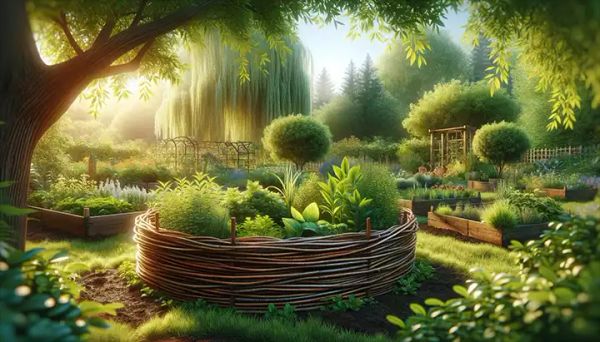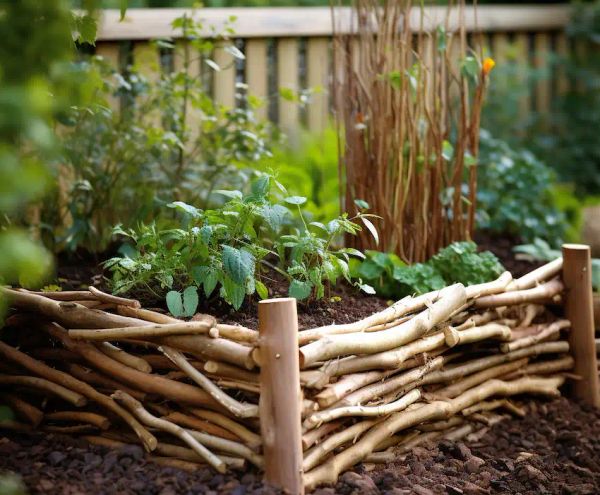
Are you looking for a new project that will spruce up your backyard? Look no further! We have the perfect idea for you – a DIY Wattle Raised Garden Bed. This rustic and eco-friendly project will not only add charm to your outdoor space but also provide you with a beautiful garden to nurture. Let’s get started!
What You Will Need

- Flexible branches or twigs (willow or hazel are ideal)
- Sturdy stakes (about 2 feet longer than the desired height of the bed)
- Hammer or mallet
- Pruning shears
- Garden gloves
- Measuring tape
- Soil and compost mix
Step-by-Step Guide
1. Planning and Design
First things first, determine the size and location of your raised bed. Make sure it receives ample sunlight based on the plants you plan to grow. Grab a pencil and sketch a rough design, noting the dimensions and shape.
2. Preparing the Site
Before you begin building, clear the area of weeds and debris. Level the ground where the bed will be placed and mark the outline using string or chalk.
3. Gathering Materials
Now it’s time to gather your materials. Collect long, flexible branches or twigs. Willow and hazel work best due to their flexibility and strength. Cut the branches into uniform lengths, considering the height and circumference of your bed.
4. Installing Stakes
Grab your sturdy stakes and cut them to your desired length, which should be the height of the bed plus 2 feet. Hammer the stakes into the ground at regular intervals around the marked area, leaving about 2 feet of stake protruding above the ground.
5. Weaving the Wattle
Here comes the fun part! Start at one corner, weaving the flexible branches horizontally between the stakes. Alternate the side each branch starts on to create a sturdy interlocking structure. Gently bend the branches as needed and weave them tightly. Use pruning shears to trim any excess lengths.
6. Building Up the Walls
Continue adding layers of woven branches until the desired height is reached. Make sure each layer is tightly interwoven for stability.
7. Securing the Top
To secure the top, tuck the ends of the final layer of branches into the weave. For a neater finish, you can also add a more rigid border on top.
8. Filling with Soil
Now it’s time to fill your wattle raised bed with a nourishing soil and compost mixture. This will provide a nutrient-rich environment for your plants to thrive.
9. Planting
Choose plants that are suitable for the size of the bed and the amount of sunlight available. Plant your seeds or seedlings according to their specific requirements. Get ready to watch your garden grow!

10. Maintenance
To ensure the health and longevity of your garden bed, remember to water your plants regularly, keeping the soil moist but not waterlogged. Adding mulch will also help retain moisture. Make sure to prune and maintain the wattle as needed to keep it tidy and intact.
Tips for Success
- For longer-lasting wattles, use freshly cut, green wood.
- The flexibility of the branches is crucial for easier weaving.
- Regular maintenance of the wattle will prolong its life.
By following these simple steps, you can create a beautiful and sustainable raised garden bed that will bring joy to your backyard for years to come. So, what are you waiting for? Roll up your sleeves and get ready to enjoy the fruits of your labor. Happy gardening!




